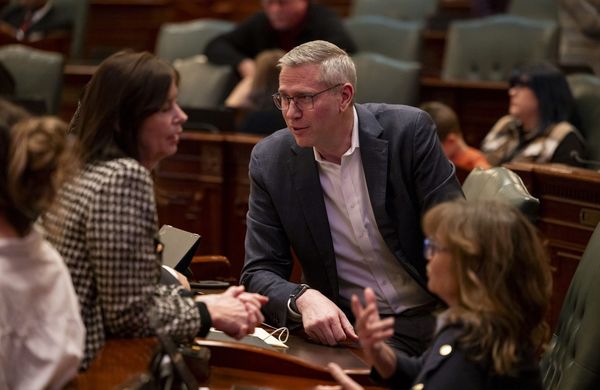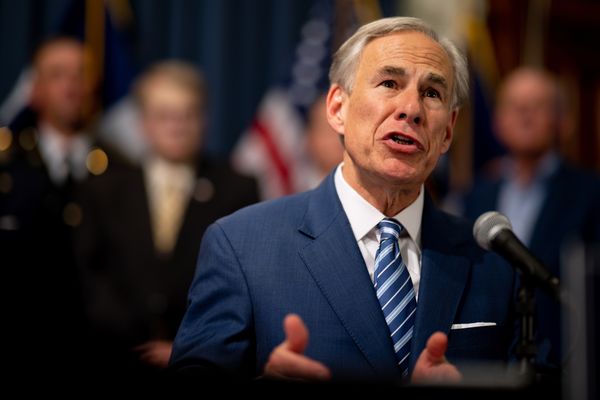
Qantas continues to resist paying Australian taxpayers back any of the $2 billion it received in corporate welfare, including JobKeeper during the pandemic, despite surging back to profitability.
Data from the Australian Bureau of Statistics showed Qantas was by far the biggest JobKeeper recipient, claiming $160.5 million in the 2020 financial year and another $695.5 million in the 2021 financial year.
It also took a slice of the $1 billion subsidies under the International Freight Assistance Mechanism (IFAM) that continued into 2022, although a company spokesman did not say how much. And it banked the bulk of an industry-wide $715 million regional assistance package.
Qantas said last week that it would bounce back into profit this financial year to the tune of more than $1 billion for the first half alone. The announcement was made by chief executive Alan Joyce last Thursday, barely six weeks after unveiling a hefty loss of $1.9 billion, the third annual loss in a row.
A raft of large corporations from a diverse range of sectors including Harvey Norman, Solomon Lew’s Premier Investments, Cochlear, Mirvac, SEEK, Nine Entertainment, Lynas and Blackmores have repaid hundreds of millions of dollars between them in JobKeeper payments after posting profits during and after the continuing pandemic, many after public shaming campaigns on social media.
But not Qantas.
It said: “Around half the money went to our employees, who were stood down and the other half was fee-for-service for repatriation and freight services we provided to the government.”
He failed to mention the regional assistance package.
Qantas chairman Richard Goyder has argued that the company’s raising of debt and equity — simply sound corporate governance — means, somehow, it should not pay back taxpayers.
“The notion that Qantas itself has been directly enriched by the COVID programs and the support from government has all gone straight to the bottom line is just wrong,” he wrote in the annual report. “While government support has been important, the group has taken its own actions to respond to the crisis. These included raising more than $5 billion in equity and debt, reducing annual spending by $1 billion by the end of financial year ’23 and selling land in Mascot for more than $800 million.
“To put this in perspective, we’ve raised roughly three times more money from the market through debt and equity than we’ve received in all forms of government support. That’s not to diminish the importance or our appreciation but to put it in context.”
But the idea behind JobKeeper was to keep companies afloat during the worst days of the pandemic. Unfortunately it was hastily designed and not structured more like a loan, as similar payments were in other countries such as New Zealand.
The payments did not stop Qantas management from sacking thousands of staff either, notably 1700 baggage handlers and ground staff whose jobs were taken illegally according to a Federal Court decision that was upheld on appeal.
They have now been outsourced to private companies and Qantas has taken its appeal to the High Court.
Qantas’s rapid return to profitability has also ensured that its senior executives, the same ones who sacked workers and who have visited chaos and pain to its customers since the start of 2022, will pocket extra payments.
A return to profit by June 30 2022 was the last of three hurdles that the company needed to meet the conditions of the special Recovery Retention Plan (RRP). That means 43 million shares will be handed out to its staff. The majority of them will be going to, naturally, Qantas executives. Up to 20,000 non-executive staff will get 1000 shares, now worth about $6000 — but only if they sign up to new enterprise bargaining agreements that give them a 1.2% pay rise across each of five years from 2019-24, well short of a cost-of-living increase. So far, only 40% of staff have signed new EBAs.
Joyce’s cut of the RRP will be head and shoulders above anyone else. He will collect 698,000, worth $4.05 million at the current share price, taking his salary last year to more than $9 million. The other four members of his executive team — CFO Vanessa Hudson, outgoing Jetstar CEO Gareth Evans, loyalty chief Olivia Wirth, and operations chief Andrew David — will receive a combined 1,137,000 worth $6.6 million.
It’s clear the RRP was designed to succeed, buoyed by taxpayer handouts. Its other hurdles, a reduction in net debt (helped hugely by a handy $800 million property sale already in the bag) and $1 billion in cost savings has been almost hit within one, rather than two years — so the targets were hardly a stretch.
The 2022 annual report said the company’s three-year recovery plan was already 90% complete. Again, not much of a stretch. It was never going to fail. It was too big — as a bonus to staff in a company where morale is plumbing unprecedented depths — to fail.
The RRP replaced the “regular” Qantas short-term incentive scheme, not paid out for the first two years of the pandemic, for the 2020-21 financial year. Qantas’ long-term incentive scheme is solely linked to share price performances. So for last year, all Qantas’ bonus schemes were solely linked to financial and share performance — if anyone was wondering where the customer might come in.
Yet Qantas would not have hit its RRP hurdles if not for taxpayer support, which means taxpayers have also supported bonuses for Qantas senior managers who illegally sacked staff and have been responsible for trashing the company’s reputation.
Many have called for Qantas to follow some other companies in paying back its government support. After all, JobKeeper payments were not handed out to all sectors. Some critical sectors where payments were not granted by the Morrison government were universities — who sacked thousands, permanently diminishing Australian academe. Many casual and contract workers and companies that employed them also missed out.
Australia’s two other major airlines, Virgin Australia and Regional Express Holdings (Rex) also received government support, although not in as many ways as Qantas. Virgin emerged from administration with government support, and Rex’s executive chairman Lim Kim Hai said when he unveiled a $46 million loss for 2020-201 that: “Barring further external shocks, I am confident that the group will return to good profitability in FY23.”
So one would think Qantas had a fair idea earlier than last week of next year’s surge back to profits, but that’s by the by, and in keeping with most Australian corporations’ casual relationship with the Australian Securities Exchange’s continuous disclosure rules.
Last week’s announcement was clearly aimed at the sharemarket and, like clockwork, Qantas’ shares soared.
It’s clearer than ever that Joyce and Goyder are managing the company for shareholders while management’s war with the company’s “blue collar” workers (ground staff, flight attendants, engineers) escalates amid growing industrial disputes.
One of the company’s biggest individual shareholders is now Joyce, who holds 4,030,743 shares inclusive of those deferred for the past three years under the LTI. As last week’s profit forecast set share up 62 cents, Joyce’s net worth improved by $2.5 million.
As Goyder noted, government support has been important for Qantas but the company’s “appreciation” to the taxpayer does not extend to paying them back.
Is it time for Alan Joyce to go? Let us know your thoughts by writing to letters@crikey.com.au. Please include your full name to be considered for publication. We reserve the right to edit for length and clarity.







